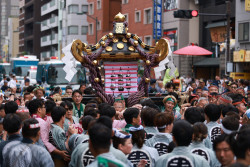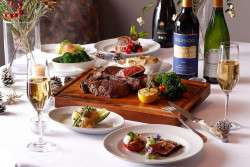
August 25, 2005
Rhythm City Cuba
In the island nation’s largest port, the common language is music
By Metropolis
Originally published on metropolis.co.jp on August 2005

Photos by Stephen Mansfield
Visitors to Cuba are invariably surprised at how an island that’s been under even relatively benign communist control since 1959 can nurture and sustain so many musical forms whose sources are ancestral and mystic, rather than political. The intertwining roots of music and religion, though impossible to suppress and with little official will to do so in any case, runs deeper than politics.
For those interested in its music, all roads eventually lead to the eastern city of Santiago de Cuba. Blessed with one of the island’s largest natural harbors, Santiago, half a millennia old and Cuba’s second largest Spanish city, boasts rich musical traditions, including bolero, salsa, and the thumping rhythms of rumba and mambo.
Arriving late at Santiago’s bus station after a 20-hour ride from Havana, a crowd of people were waiting with business cards and photo albums, offering accommodation. Santiago at night is another of Cuba’s dark cities. What the island lacks in electricity, however, it makes up for in the crackling static of the human voice, its nocturnal songs, cries and murmurings, the fleshy rhythms of its music.
If Santiago is Cuba’s most musical city, it is also, with a population half mulatto, a quarter black, its most African. People moved with a lilting, almost musical comportment under dark, lustrous skin that barely covered the coiled energy waiting to spring from beneath the tropical lassitude. On the street, Congolese and French phrases, African proverbs, snatches of Yoruba lyrics, and the sexual innuendo common to Santiago songs creep into conversations, tinting the Spanish of the conquistadors. There are also French traces here, in a quarter located in the hilly Santiago district of Tivoli, where the descendents of a slave revolution in Haiti in 1791 still live. As the musical traditions of the Haitians came in contact with the Afro-Hispanic culture of Santiago, rich cross-pollinations took place.

The city’s street music was a good warmup for nightly performances at places like the Casa del Caribe, Casa de las Tradiciones, and the Teatro Oriente, which stages regular shows by the Ballet Folklorico Cutumba, an acclaimed Afro-Cuban dance group. They also serve as a limbering up for the sensual dementia of Santiago’s July carnival.
Though suppressed during the 1895 Cuban War for Independence, the distractions created by carnival conga groups and dancers provided cover for Cuban freedom fighters. Three years later the Spanish were undone, albeit to be governed by another nation with colonial aspirations and a relationship with the island that would prove equally costly to Cubans.
The Spanish-American War, and Cuba’s fate, was sealed here in this city. According to legend, Teddy Roosevelt’s Rough Riders seized Santiago’s San Juan Hill after a cavalry charge that all but ended the war. In reality, the charge never happened: Cavalry were not deployed during the campaign, and the battle was virtually over by the time Roosevelt arrived on the scene. As writer Christopher P. Baker observed while staying on the hill at the Hotel San Juan, “Victors don’t just take the spoils—they also write the history books.”
Pride may have been restored to the good people of Santiago since then, but time itself had hardly advanced in the near half-century since the revolution. Perhaps because of the sense of coming face-to-face with lost time in the form of neo-colonial villas, mambo-era American cars, and enduring musical traditions, accounts of the region by travelers in the ’40s and ’50s remain remarkably faithful. The travel writer Patrick Leigh Fermor passed through Santiago in 1949, enthusing, just as a visitor might do today, about its “High Renaissance churches in the Florentine style, its Tuscan altars, and its castles, museums and palaces.” Along with the city’s musical legacies, these are traditions that remain as firmly planted as its lovely buildings.
There are no direct flights from Japan to Cuba. Most travelers go via Toronto or Mexico City. Domestically, Cubana de Aviacion has two or three daily flights to Santiago. Time permitting, Astro buses are comfortable, though the overland trip could take up to 20hrs from Havana. Americans are technically not allowed to visit Cuba, though tens of thousands do every year via Mexico, Canada or the Bahamas. The Cuban Embassy in Tokyo’s Higashi-Azabu (Tel: 03-5570-3182) can provide the tourist card required as an alternative to having passports stamped. Santiago’s centrally located Hotel Casa Granda. (Tel: 53-22668-6600) has stately rooms for $55-90. Rooms in private houses called casas particulares are good value at $15-25 a night. There are several good state-run restaurants in the Plaza de Dolores, though private eateries called paladares are better value. You will be approached about having dinner (for about $10) in a private home. Though strictly illegal, these are the best deals. Lonely Planet’s Cuba is the most comprehensive guide. Trading with the Enemy: A Yankee Travels Through Castro’s Cuba, by Tom Miller, is an excellent travelogue, while Jory Farr’s Rites of Rhythm, a book on Cuban music, has much to say about Santiago.
[geo_mashup_map]







